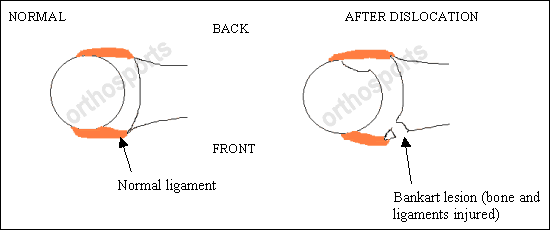Inside This section
Shoulder Instability
The shoulder joint (gleno-humeral joint) is structured as a “ball-in-socket” joint. This allows for extreme ranges of motion. Certain individuals are inherently “loose” or lax in their shoulders, which may place them at greater risk of instability.
Shoulder Instability is a condition where the ball comes out of the socket. A “dislocation” is when the ball fully comes out of joint, whilst a “subluxation” is when the ball partially comes out.

Shoulder Instability most commonly occurs after shoulder injury in those under 40 years of age. Football, skiing and surfing injuries as well as falls at work are the most common settings when this occurs. Occasionally, in people who have hypermobile joints, instability can occur with minimal trauma.
Often sedation or anaesthesia is required to reduce a dislocation and analgesic medications are required for the next few days. A sling is used for the first few days for comfort. A medical assessment, including an x-ray of the shoulder, is required in all cases.
Associated injury to bone, the cartilage of the shoulder (labrum), the lining of the shoulder (capsule) or surrounding muscles (rotator cuff) and nerves may complicate the injury and require further investigations.
As a result we recommend an MRI/Arthrogram after an instability episode, to assess the damage to the joint.
Despite advances in rehabilitation, strengthening and physiotherapy the recurrence rate for shoulder instability is high ( over 90% recurrence in 20 year old males). That recurrence rate is far higher in those persons with bony and cartilage damage than those without.
It should be noted that with every subsequent dislocation further damage can be done to the shoulder joint and this predisposes you to osteoarthritis in the future.
Surgery is often required which may be done either arthroscopically (minimally invasive surgery) or through an open incision. The surgery depends on the extent of the damage and future physical demands on the shoulder. However, if the patient is active and there is significant damage to the structures of the shoulder, a reconstruction is highly recommended.
In those less active patients who have little structural damage to the shoulder, physical therapy can help stabilize the shoulder without resorting to surgery in many cases.
Remember
- All shoulder dislocations require medical assessment.
- Recurrence rate high in younger patients.
- If you are inherently “loose” in the shoulder ligaments the injury risk is greater.
- Rehabilitation with a sports physiotherapist is required.
- Surgery may be required depending on the extent of the injury
